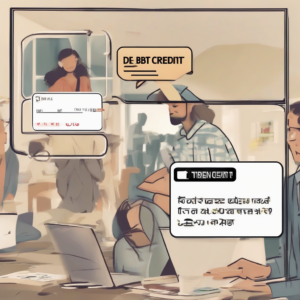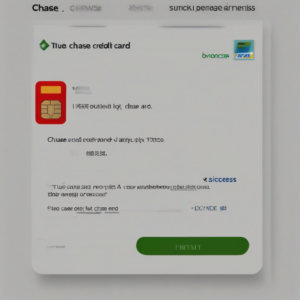The Crushing Weight of Credit Card Debt: A Comprehensive Guide to Understanding, Managing, and Escaping
Credit card debt has become a pervasive issue in modern society, trapping millions in a cycle of accumulating interest and financial strain. Understanding the intricacies of credit card debt is the first step towards achieving financial freedom. This comprehensive guide delves into the various facets of credit card debt, providing insights into its causes, consequences, and effective management strategies.
Understanding the Mechanics of Credit Card Debt
Credit cards offer a convenient form of short-term borrowing, enabling purchases beyond immediate financial means. However, the seemingly effortless access to credit often masks the potentially devastating consequences of irresponsible usage. The key element to understand is the interest rate – the annual percentage rate (APR) – which is the cost of borrowing money. High APRs, often exceeding 20%, can rapidly inflate debt balances, making repayment a daunting challenge.
- High Interest Rates: The cornerstone of credit card debt’s destructive power lies in its high interest rates. These rates are significantly higher than those offered by other forms of borrowing, such as personal loans or mortgages.
- Minimum Payments: Credit card companies often encourage minimum payments, which seem manageable at first. However, these minimum payments primarily cover interest, leaving the principal balance largely untouched. This results in a slow, agonizing repayment process that can last for years, even decades.
- Compound Interest: The compounding nature of interest accelerates debt growth exponentially. Interest is calculated not only on the initial principal balance but also on the accumulated interest itself. This snowball effect can quickly overwhelm even responsible borrowers who experience unexpected financial setbacks.
- Fees and Charges: Beyond interest, credit cards often levy various fees, such as late payment fees, over-limit fees, and balance transfer fees. These fees further escalate the debt burden and can significantly hinder progress towards debt repayment.
Causes of Credit Card Debt
Credit card debt rarely arises from a single cause. Instead, it often stems from a combination of factors, including:
- Overspending: The ease of swiping a credit card can lead to impulsive purchases and overspending beyond one’s budget. The immediate gratification outweighs the long-term financial consequences.
- Unexpected Expenses: Life often throws unexpected curveballs, such as medical emergencies, job loss, or car repairs. These unexpected expenses can quickly deplete savings and force individuals to rely on credit cards for immediate financial relief.
- Low Financial Literacy: A lack of understanding about personal finance, budgeting, and interest rates can lead to poor financial decisions and the accumulation of debt. Many individuals are unaware of the true cost of credit card debt.
- Poor Budgeting: Without a well-defined budget, it’s difficult to track expenses and ensure that income exceeds outgoings. A lack of budgeting often results in reliance on credit cards to cover shortfalls.
- High-Interest Debt: Many people get trapped in a cycle of high-interest debt by using credit cards to pay off other high-interest loans, leading to a snowballing effect.
Consequences of Unmanaged Credit Card Debt
The consequences of unmanaged credit card debt extend far beyond financial difficulties. They can significantly impact various aspects of life, including:
- Financial Stress: The constant worry and anxiety associated with debt can lead to significant stress, affecting mental and physical health.
- Damaged Credit Score: Missed or late payments severely damage credit scores, impacting future borrowing opportunities, such as mortgages, auto loans, and even securing rental properties. A low credit score can lead to higher interest rates on future loans, perpetuating the debt cycle.
- Legal Actions: Unpaid credit card debt can lead to legal actions, including wage garnishment, bank levies, and even lawsuits.
- Relationship Strain: Financial stress can strain relationships with family and friends. Arguments about money can significantly damage personal relationships.
- Bankruptcy: In extreme cases, unmanaged credit card debt can lead to bankruptcy, a legally declared insolvency that can have devastating long-term implications.
Strategies for Managing and Eliminating Credit Card Debt
Tackling credit card debt requires a proactive and strategic approach. Several strategies can help manage and ultimately eliminate the debt:
- Create a Budget: The first step is to create a detailed budget that tracks all income and expenses. This allows for a clear understanding of spending habits and identifies areas where expenses can be reduced.
- Debt Snowball or Avalanche Method: These are two popular debt repayment strategies. The snowball method focuses on paying off the smallest debt first for motivation, while the avalanche method prioritizes debts with the highest interest rates to save money in the long run.
- Balance Transfer: Transferring balances to a credit card with a lower APR can significantly reduce interest payments. However, it’s crucial to carefully review the terms and conditions, including balance transfer fees and introductory periods.
- Debt Consolidation: Consolidating multiple debts into a single loan can simplify repayment and potentially lower interest rates. However, it’s important to compare interest rates and fees across different lenders.
- Negotiate with Credit Card Companies: Contacting credit card companies and negotiating a lower interest rate or a payment plan can provide temporary relief and prevent further damage to credit scores.
- Seek Professional Help: Credit counseling agencies can provide guidance and support in developing a debt management plan. They can also negotiate with creditors on behalf of debtors.
- Avoid New Debt: While tackling existing debt, it’s crucial to avoid accumulating new debt. This means using cash or debit cards for purchases whenever possible.
Preventing Future Credit Card Debt
Preventing future credit card debt requires establishing healthy financial habits and maintaining responsible spending practices:
- Track Spending: Regularly monitor spending to identify areas of overspending and make adjustments to the budget.
- Emergency Fund: Building an emergency fund can provide a safety net for unexpected expenses, reducing the need to rely on credit cards.
- Financial Literacy: Continuously learning about personal finance, budgeting, and debt management can equip individuals with the knowledge and skills to make informed financial decisions.
- Use Credit Cards Wisely: Credit cards can be a useful financial tool if used responsibly. Pay off balances in full each month to avoid interest charges.
- Set Financial Goals: Setting clear financial goals, such as saving for a down payment on a house or paying off student loans, can provide motivation and direction.
The Importance of Seeking Help
Struggling with credit card debt can be overwhelming and isolating. It’s essential to remember that seeking help is a sign of strength, not weakness. There are numerous resources available to assist individuals in managing and overcoming credit card debt. Don’t hesitate to reach out to credit counseling agencies, financial advisors, or support groups for guidance and support.
Overcoming credit card debt requires dedication, discipline, and a strategic approach. By understanding the mechanics of credit card debt, its causes and consequences, and implementing effective management strategies, individuals can regain control of their finances and achieve long-term financial well-being.





